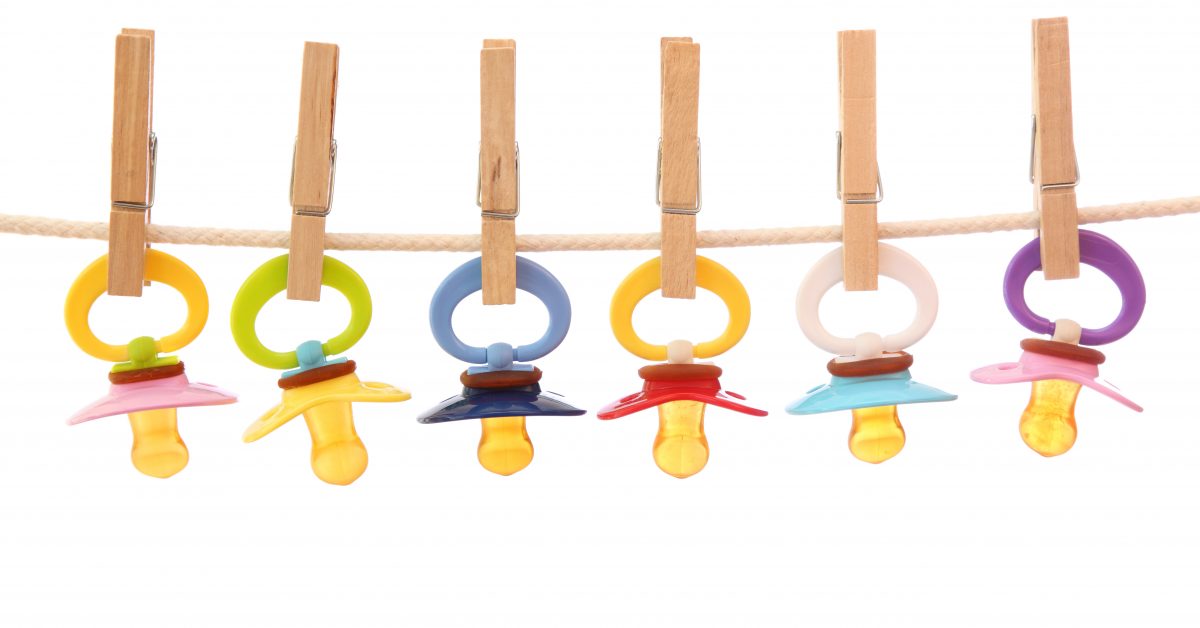Just before we start……….
If your baby is crying for an extended period of time and your gut is telling you there is something more going on. Please take your baby to their doctor or hospital if out of hours.
Particularly if your baby has a fever, a rash or the crying session is out of the ordinary for your baby. Better to get your baby checked then sit on this!
Now on to the content and help your little bundle of joy!
Let’s set the scene……………..your new baby is under 6 weeks, it is anywhere in the day but most likely night time! Your baby has been screaming without sleep for many hours! Is inconsolable and you just don’t know what is wrong OR what to do!
Your baby may be overtired! You haven’t done anything wrong…..it’s just part of being a new human in this world 🙂
You know what it feels like to be overtired! When your life is too busy and you have too much on your plate with too little sleep! You are exhausted, cranky and burnt out! It doesn’t feel good at all!
Now try and think of your baby, they are much smaller packages and have big jobs to do! Like, feeding, sleeping, learning new bodily functions and GROWING! A baby gets overtired much quicker than us and needs more sleep than us!
So being overtired is normal! It happens everyday for a newborn particularly under 6 weeks! But there are a few tell-tale signs that alert you to their overtired state! If you learn these you can start to help your baby without WORRYING!
What Does Your Overtired Baby Look Like?
Your baby will show lots of cues to tell you they are overtired. Quite often new parents are not aware what an overtired baby looks like, TOTALLY NORMAL!
Crying and screaming is the first cue!
Crying is your baby’s only language so they cry HEAPS, particularly under 6 weeks! They cry at every task you do, feeding, settling, nappy changing, bathing, burping and anything else you do!
Babies are different to us as adults. If we cry it means something is very wrong! If a baby cries it is just that something is happening to them!
An overtired baby just cries for a longer period of time. You see, your baby gets into a bit of a pickle! They get overwhelmed with everything they do and somewhere in a 24 hour period your baby will cry for a longer than normal period of time (an overtired baby!)
So you can expect this as part of your normal day. You can start to anticipate this overtired time and just know that you can get through it. You will be up and tending to your baby but it will END!
After the extended crying cue your baby may show signs that they want to breastfeed, however, they don’t latch. They hover their crying mouth over your nipple but don’t get going! This ist he next cue.
Pushing away from you, particularly at the breast
This is a big one! You may think there is something wrong with your breastfeeding, am I right?! Well, there is not! Your baby is so overstimulated that they can’t calm themselves long enough to do their usual searching and latching on to the breast.
Your baby is not rejecting you or knowingly pushing you away (it feels like this sometimes!). It is just hard for them to come to the party and do their job when they are overtired.
They can even refuse to breastfeed at all, that’s up next………….
Refusing the breast
This is the most distressing. You can lead your baby to the breast and they won’t drink! Your baby will cry and even cry with their mouth hovering over the breast! All you want them to do is suck but they won’t! This is because it takes energy to suck and they are too tired to do this.
Don’t worry, your baby will eventually get it! It just takes time and some calming for you both to come together. You will see the answers in the TOOLS.
Next up is a tell-tale sign that always gets the blame for EVERYTHING!
Pulling their legs up
You may notice your baby pulling their legs up towards their tummy! This can look like they have a tummy ache and wind pain. Well, this may be true, especially if they have been crying for a long time.
Lots of crying means they swallow air and can get a pain in the tummy. But don’t worry, this will pass with feeding and settling. It is part of being overtired!
Lots of parents label this as ‘wind’ or ‘colic’, which can be true. BUT, you are still dealing with a baby that is overtired and needs attention for this!
The wind and colic are symptoms of an overtired baby rather than the cause! So my message is ALWAYS treat the cause and you will be all fixed!
So lets get on to the TOOLS to resolve this and get your beautiful calm baby back!

Your TOOL BOX!
The key to manage an overtired baby is to keep trying all the tools until your baby finally goes to SLEEP! As you know an overtired baby is really just overstimulated.
There is nothing in particular wrong so the answer will not be a one size fits all. It will be a whole lot of things combined, in any order and repeated!
This means you don’t have to worry about what to do! Just do it all and repeat over and over until your baby finally goes to sleep……………..AND they will, trust me!
Some overtired babies will cry and need assistance for many many hours! An average time is about 4 hours but it can be double this when your baby is really over stimulated.
THE KEY: MOVE THROUGH THE TOOLS QUICKLY
It is best not to try for too long on any tool unless it is working! If you listen to your baby you will notice if they are escalating (crying more) or calming. Calming means you stay on your tool, keep going and you may get SLEEP!
If not, change to the next tool and see if you get a better response. You may also find a combination of a few tools work best. For example, wrapping and patting or wrapping and breastfeeding! Mix it up until it works!
If you have a great combo let me know in the comments so others can share in your success and learn from YOU!!
Tool #1 RESPOND
This is the easy one! All you have to do is pick your baby up and respond to their cries! You can do this at any time in your baby’s day! Your baby may not be in an overtired state, you may just feed and then back to bed. OR this won’t happen and you keep responding over and over again. This is when you realise you are in an overtired situation!
SO responding is a great tool. Just so you know it is not a good idea to leave your baby alone to deal with this. They don’t have ANY coping skills and can’t sooth themselves. But the great thing is YOU do!
Some may think they are SPOILING their baby. Forget this! You cannot spoil your baby, they don’t have the capacity to remember and manipulate you (just yet!). So follow your primal instinct to pick your baby up and soothe!
Your baby will immediately feel your support even if they are still crying. Your love and care and response are keys to unlocking their CALM!
Tool #2 Keep calm
While you are trying to unlock your baby’s calm you also need to KEEP CALM! This is difficult to do when you are tired, worried and stressed!
But if you know that this overtired pattern happens each day you will get better at keeping calm. Here’s a few strategies that you can implement now! GET UP! Even if it is in the middle of the night! You will fell better if you are not always trying to get back to bed.
Make a cuppa, put the TV on and have this list handy! Then keep following the tools!
Tool #3 Wrapping
Wrapping is a fantastic tool to calm your baby! Now I do hear a lot from mothers about sleep suits rather than wrapping. Or that their baby just doesn’t like to be wrapped. This may be true, however, an overtired baby will struggle when you try and wrap them. This does not mean they don’t ‘like’ the wrap. It is just their overtired little person coming out to play! Just keep wrapping and your baby will respond and calm down.
A good, tight wrap CAN reduce overstimulation and give you a neat little package to cuddle, pat and breastfeed if you need to!
Just remember, it is up to you if you wrap your baby or maybe a sleep suit will work better for you baby, that is ok. But I dare say, you are here to learn more tools so give wrapping another try.
Tool #4 Patting
I love this step! So once you have wrapped your baby into a little burito you can begin patting. Start by placing your baby on your chest, or across your body. You want your baby facing you. Now place one hand at their upper back and use your other hand to pat their bottom in a rhythmical pattern.
You may find your baby is still crying, just keep going and see if your baby starts to calm in your arms. You can also say Shh Shh Shh while you are patting.
If your baby is not settling and the crying increases. You may notice your baby will start to look for food! If this is happening or you ‘think’ this is happening then a breastfeed is next on the menu!
Tool #5 Breastfeed
Now, don’t worry if your baby has just fed! Don’t worry if your baby does not take the breast! Don’t worry if your baby pulls away from the breast! This is all very NORMAL!
This breastfeed is just a tool to help you calm your baby. Your baby may have a great feed or only a few sucks. The goal is to calm your baby enough for them to go off to sleep.
The breast is a wonderful place to fall asleep. Don’t worry if you baby falls asleep here, it means you have WON! The goal for an overtired baby is sleep and if the breast does it then this tool worked!
Your baby can be all wrapped up at the breast. This means you may be able to transfer your little bundle straight to bed.
But, if the breastfeed does not work, you may swing round to this again soon! If not, move on to the next tool……..
Tool #6 Finger sucking
This trick can be used at any time. What finger sucking does is lets your baby suck to calm without having to breastfeed. It takes more energy to breastfeed than it does to suck on your finger.
Use a clean finger and place it so the pad of your finger is facing towards the roof of your baby’s mouth. Then rub the pad on the roof of their mouth. Your baby will take your finger and cup it with their tongue and suck.
If your baby is not responding to this then stop and move to another tool. You will know if this is working within a few minutes! On to the next……….
Tool #7 Check nappy
This may seem like an obvious tool, but it is important! The reason is, one minute there could be no surprises, the next a VERY full nappy! So keep checking as part of your tool checklist!
Another important reason to check the nappy is to keep a record of your baby’s poo and wee. If you baby is having an extended overtired, crying session, you can get worried! But if your baby continues to poo and wee, that is yellow, soft poo and clear wet nappies then your bub is ok!
Head on over to my blog on is my baby getting enough to learn more on the contents of your baby’s nappy! Love this topic!
Where to from here, especially if your baby is STILL crying! REPEAT!
Tool #8 REPEAT
Over and over again! Repeat in any order at any time with any combination! These are pretty much all the tools you will need to calm your baby.
WONDERFUL!
What next?
I bet your wondering how you limit these overtired sessions to the minimum amount of time! You see the more overtired your baby is the longer these tools will take to work!
Remember I said that this is a normal part of your baby’s day. Well it is but you can get this time really short! You just have to make sure each breastfeed, settling session and other task is conserving energy!
You can head on over to my blog, 72 hours to a clam baby and sink your teeth into the tools for EVERY feed! The reason it is 72 hours is because your baby is overtired NOW! So you need to set yourself on the right course and the CALM will follow.
To sum up……….An overtired baby just needs to be coaxed along until they are able to feed again or fall peacefully asleep!
Last points…………
Keep an eye the poo and wee this will tell you if your baby is getting enough. If this is not the case then you can send me a message 0414 403 208 and we can troubleshoot together.
Have FUN!











